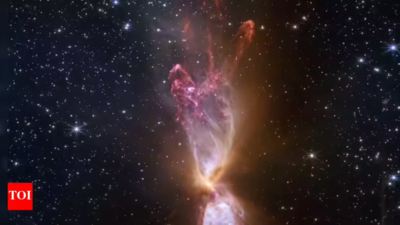ARTICLE AD BOX

Out on a remote tract of land in Hingoli district of Maharashtra, well away from busy towns and cities, work is on to set up one of the most sensitive detectors on the planet.India’s Laser Interferometer Gravitational-Wave Observatory (LIGO) is expected to be unveiled by 2030 — the third after the two in the US.
It will be an engineering feat: over 100 acres of land would have to be flattened to compensate for Earth’s curvature; the facility’s arms, each 4km long, will be vacuum-sealed to prevent air molecules from disturbing the laser being beamed through them.
In the arms will be 40kg mirrors hanging on glass fibres thinner than human hair, isolating them from all surface vibrations. It’s being built to detect vibrations from space, first confirmed 10 years ago.On Sept 14, 2015, the two US observatories picked up a faint ‘murmur’ from space that lasted just 0.2 seconds. It was the remnant of a shock wave from an explosion 1.3 billion light years away, triggered by the violent merger of two giant black holes. Within milliseconds, three times the mass of our Sun was converted into gravitational waves, which then travelled to Earth unimpeded by galaxies, space dust and debris, leading to the first confirmed detection of a black-hole collision.
This also confirmed Albert Einstein’s 1916 prediction that cataclysmic cosmic events send invisible ripples through space-time. The study of these ripples will help answer fundamental questions: how old is the Universe? What is it made of? What is dark matter? LIGO at Hingoli would be crucial to these investigations, scientists said.

“A detector on the other side of the planet from the American ones will dramatically boost our ability to localise gravitational wave sources,” said Somak Raychaudhury, astrophysicist at Ashoka University.“Good localisation means telescopes can be swiftly directed to exact sky regions, enabling us to not only catch the ‘when’ and ‘where’ of black-hole collisions but to understand what other processes were unfolding,” he said. Sanjit Mitra, LIGO-India science spokesperson, said Hingoli would be a “game-changer”.“Only one detection, in 2017, was followed up with a telescope. With LIGO-India, probability of that happening rises twentyfold, allowing us to measure the Universe’s expansion rate more accurately,” he said.Raychaudhury and Mitra refer to “multi-messenger astronomy”, a combination of gravitational-wave data and telescope observations to study cosmic events.In 2017, when LIGO detectors picked up ripples from the merger of two neutron stars 130 million light years away, Nasa’s Fermi space telescope captured high-energy gamma rays from the same event — just two seconds later. The swift response led to the discovery that elements like gold, platinum and silver are forged in such blasts.University of Glasgow physicist Giles Hammond, who designed critical components of LIGO detectors, said work is under way to boost device sensitivity tenfold, to catch a “thousand times more events”. He pointed to plans for ‘Moon LIGO’, where the quiet of space would allow unmatched precision.The 2015 signal was from 1.3 billion light years away. Researchers hope to one day catch primordial ripples from the first second after the Big Bang, 13.8 billion years ago. That, Mitra said, “would be the holy grail of astronomy”.



.png)
.png)
.png)
















 2 hours ago
4
2 hours ago
4









 English (US) ·
English (US) ·